Email Template
Creating Email Template Objects in Salesforce
Need to take your email communications to the next level? Discover the powerful capabilities of the Email Template Object in Salesforce.
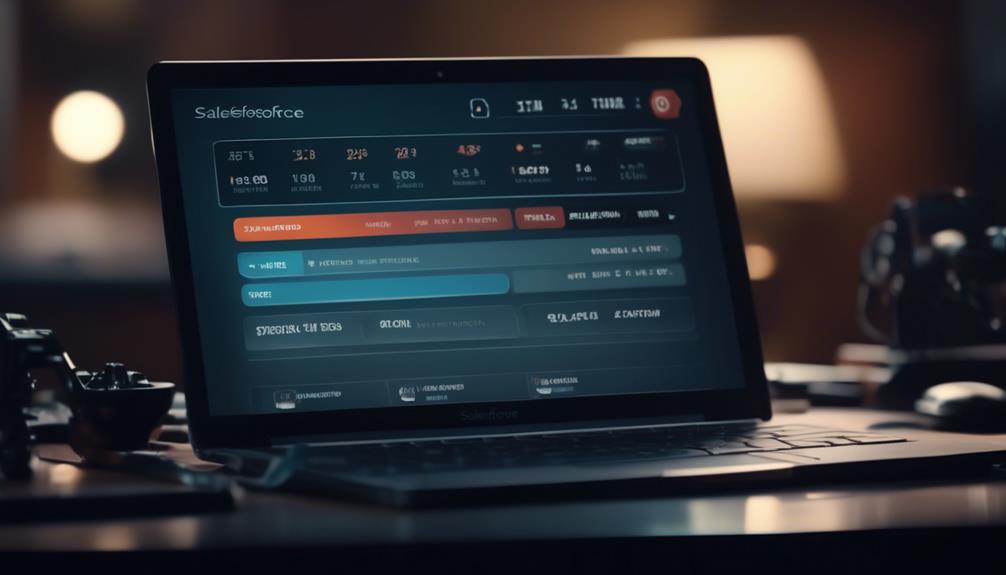
We’ve all experienced that moment – staring at a blank email template, unsure of how to begin.
Did you know that companies that use email templates are 60% more likely to convert leads into customers?
Understanding the Email Template Object in Salesforce is crucial for effective communication and streamlining processes.
But what if there was a way to go beyond the basic email templates and create more personalized, interactive experiences for your customers?
That's where the Email Template Object in Salesforce comes in, offering a range of capabilities that can elevate your email communications to the next level.
Key Takeaways
- There are different types of email templates in Salesforce, including Classic Email Templates and Lightning Email Templates.
- Salesforce Email Templates have limitations such as account-based limits, attachment and image file size limits, and restrictions on merge fields, character limits, and formatting options.
- Switching between Salesforce Lightning and Classic allows for a seamless transition between different user interfaces, with Lightning providing a more intuitive process for creating and managing email templates.
- Importing email templates in Salesforce involves utilizing the EmailTemplate sObject, which offers customization options and the flexibility to incorporate data from various objects. Testing and ensuring the correct display of content and merge fields is crucial before sending Salesforce email templates.
Types of Email Templates in Salesforce
When using Salesforce, it's important to understand the various types of email templates available to tailor your communication to meet different needs.
In Salesforce Classic, there are Classic Email Templates that offer simple text, HTML with Classic Letterhead, custom HTML, and Visualforce templates for more advanced customization.
On the other hand, Lightning Email Templates in the Lightning interface provide options for Enhanced Letterhead, dynamic content, and advanced customization to create sophisticated email designs.
However, it's essential to be aware of the limitations associated with Salesforce Email Templates, such as account-based limits, attachment and image file size limits, and restrictions on merge fields, character limits, and formatting options.
When creating email templates in Salesforce Classic, steps include selecting merge fields, creating Classic Letterheads, and customizing HTML and Visualforce templates to ensure that the communication aligns with your branding and messaging.
It's also important to note that emails containing Salesforce email templates can be sent using both the Salesforce Classic and Lightning interface, as well as through Apex for automated communication.
Understanding the differences between these types of email templates and how to utilize Visualforce and merge fields effectively can greatly enhance your communication strategies within Salesforce.
Salesforce Email Template Limitations
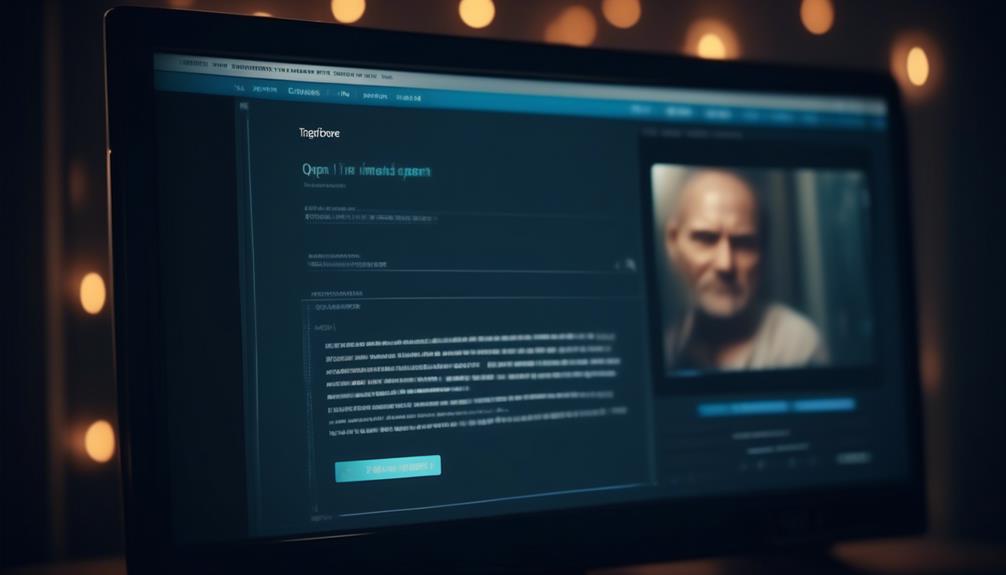
Understanding the limitations associated with Salesforce Email Templates is crucial for effective communication customization. These limitations include account-based limits, attachment and image file size limits, and restrictions on merge fields, character limits, and formatting options.
Salesforce imposes a limit on the number of email templates that can be created based on the account and platform version. This means that the number of templates available may vary depending on these factors.
Additionally, there are constraints on the file sizes of attachments and images that can be included in the templates. It's important to be mindful of these limitations when designing templates to ensure that the files can be successfully attached and displayed in the emails.
When designing templates, it's also important to be aware of the limited number of merge fields allowed per email template. Exceeding this limit can impact the template's functionality and cause issues with data merging.
Furthermore, Salesforce imposes maximum character limits for various elements within the email template. This includes the body and subject line, which means that there may be restrictions on the length of content that can be included.
Lastly, it's essential to note the formatting restrictions for HTML and CSS elements within the templates. These restrictions can impact the visual presentation of the emails and should be taken into consideration when designing templates.
Being aware of these Salesforce email template limitations is crucial for creating effective and compliant communication through this custom object.
Switching Between Salesforce Lightning and Classic
Switching between Salesforce Lightning and Classic allows us to seamlessly transition between different user interfaces based on our specific needs and preferences. In Salesforce Lightning, the process of creating and managing email templates is more intuitive and user-friendly. However, there may be instances where we need to switch to Salesforce Classic to access certain features or functionalities, such as utilizing VisualForce for advanced email template customization.
When switching between Salesforce Lightning and Classic to work with email templates, it's important to note that the steps for selecting and using templates may vary slightly between the two interfaces. In Salesforce Lightning, we can easily access email templates by navigating to the Object Manager, selecting the Email Template object, and then using the Select Template button within the email record.
Conversely, in Salesforce Classic, we may need to follow a different set of steps to achieve the same outcome. By understanding how to navigate between these interfaces, we can effectively leverage the strengths of both Lightning and Classic to optimize our email template management process.
Importing Email Templates in Salesforce
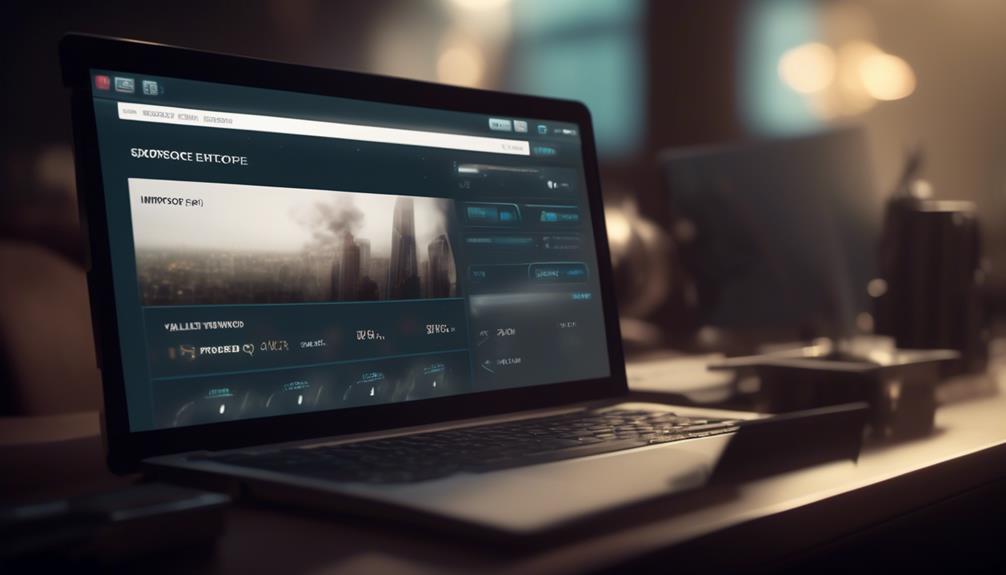
To import email templates in Salesforce, we can efficiently streamline our communication process and enhance our marketing efforts. This process involves utilizing the EmailTemplate sObject and its capabilities to define and manage email templates.
By leveraging VisualForce Templates, we can create dynamic templates with placeholders for fields from different objects, allowing for more advanced customization and data integration.
When importing email templates, it's essential to consider the best practices recommended for the EmailTemplate sObject. This includes understanding the object structure, conducting thorough testing, and regularly reviewing and updating templates for relevance and effectiveness.
Utilizing the EmailTemplate sObject for importing templates enables us to access a wide range of customization options, ensuring that our communication with customers and internal users is tailored to our specific needs. It also provides the flexibility to incorporate data from various objects, enhancing the overall effectiveness of our email communications.
What are the Benefits of Using Email Template Objects in Salesforce?
Using Salesforce email template using HTML can greatly benefit your business. It allows for easy customization, helps maintain brand consistency, and ensures a professional appearance. Plus, by utilizing these templates, you can save time and streamline your email marketing efforts.
Testing and Sending Salesforce Email Templates
When it comes to testing and sending Salesforce email templates, ensuring that the content and merge fields display as intended before sending them out is crucial for seamless communication with customers and internal users.
Here are some key practices to consider:
- Utilize sample data in a sandbox environment to ensure the email templates function correctly and contain the desired information.
- Send test emails to different email clients and devices to check for formatting and rendering issues.
- Use the 'Send Test and Verify Merge Fields' feature to preview how merge fields populate with actual data.
In addition, it's important to ensure that any dynamic content or conditional statements within the email templates are functioning as expected during the testing phase.
Frequently Asked Questions
How Do I Create an Email Template in Salesforce?
We create an email template in Salesforce by navigating to the Email Templates section and selecting 'New Template.'
Then, we choose the type of template – Text, Visualforce, or Custom HTML – and define the template content, including merge fields for personalization.
After saving the template, we can use it to send emails to customers or internal users.
Regular testing and updates ensure the templates remain effective for communication.
What Are the 4 Types of Email Templates That Can Be Created in Salesforce?
We're like email architects designing a skyscraper of communication.
In Salesforce, there are four types of email templates: Classic, Visualforce, Lightning, and Custom HTML.
Each template offers different levels of customization and design elements.
Classic templates include text, HTML, and custom HTML.
Visualforce templates use Visualforce markup language for dynamic data integration.
Lightning templates provide advanced customization with Enhanced Letterhead and drag-and-drop editor.
Custom HTML allows for personalized design elements.
How Do I Create a Dynamic Email Template in Salesforce?
First, we identify the dynamic content needed, like recipient name or account details.
Then, we create a VisualForce Email Template in Salesforce. We use merge fields to pull in dynamic data from related objects.
After testing, we're ready to send personalized emails.
This approach offers more flexibility and data integration compared to HTML templates.
We ensure thorough testing and consider trade-offs with other solutions based on complexity and impact on user experience.
What Are the Limitations of Lightning Email Templates?
We've encountered several limitations with Lightning email templates. These templates restrict the number of merge fields allowed, limit the flexibility of conditional statements, and offer less HTML and CSS formatting compared to custom templates.
They may not support advanced customization or data integration as VisualForce templates do. In displaying complex email layouts, users may also face challenges.
It's like trying to fit a square peg into a round hole – it just doesn't quite work seamlessly.
Conclusion
In the world of Salesforce, the Email Template Object is a powerful tool that allows us to create and manage customized email templates. With its ability to store and retrieve information, it's like the Swiss Army knife of email communication.
So, let's harness the power of Email Template Object Salesforce to craft compelling and personalized emails that will leave a lasting impression on our customers and internal users.
Natali – Editor in Chief (Strategy and Mastery, AI Expert) Natali, our Editor in Chief, is the driving force behind our content’s strategic direction. With a keen eye for detail and a deep understanding of market trends, Natali ensures that our content is top-notch and strategically aligned with our client’s goals. Her expertise in AI helps to seamlessly integrate advanced technology into our marketing strategies, pushing the boundaries of conventional marketing.
Email Template
Crafting the Perfect Subcontractor Email Template
Craft a Subcontractor Email Template that will revolutionize your communication with subcontractors and catapult your project to new heights.

Navigating the intricate world of project management, the Subcontractor Email Template serves as a guiding light, leading us through the intricate web of negotiations and agreements. This template is a vital instrument that can either support the triumph of a construction project or result in its downfall.
With the potential to streamline communication and pave the way for a harmonious working relationship between main contractors and subcontractors, this template holds the key to unlocking a world of clarity and efficiency in our collaborative endeavors.
But there’s more to this template than meets the eye – it’s not just about sending emails; it’s about setting the stage for a seamless partnership.
Key Takeaways
- Clear communication is essential for ensuring understanding and avoiding errors or delays in a project.
- The email template serves as a reference point throughout the project, establishing clear expectations and requirements.
- Establishing expectations includes defining the scope of work, establishing timelines, and ensuring accountability for mistakes.
- Maintaining a professional tone and language in the email helps convey respect and professionalism.
Importance of Clear Communication
Clear communication is crucial for successful subcontracting, as it ensures that all parties involved understand expectations and requirements, leading to smoother project execution. When engaging in subcontracting, it’s imperative to establish a formal agreement that outlines the scope of work, timelines, deliverables, and responsibilities. This formal agreement serves as a reference point for all parties involved, providing clarity and minimizing the potential for misunderstandings.
By clearly defining the scope of work, all parties can align their efforts towards achieving the project goals effectively.
Effective communication also plays a vital role in setting clear expectations and requirements. It reduces the likelihood of errors or delays by ensuring that all parties are aware of the specific details and standards to be met. This level of clarity fosters transparency and trust among all parties involved, creating a conducive environment for successful project outcomes.
Additionally, clear communication enables swift conflict resolution and problem-solving, minimizing disruptions to the project timeline and budget. It ensures that all parties are fully aware of their responsibilities and accountabilities, ultimately contributing to the smooth execution of the project.
Key Components of the Email

When ensuring successful subcontracting, effective communication becomes the linchpin for establishing clear expectations and requirements, a principle that carries over into the key components of the email.
In crafting a subcontractor email template, it’s essential to include the following key components:
- Identification of Parties:
Clearly state the names and contact information of both the subcontractor and the main contractor.
- Scope of Work and Payment Details:
Define the specific scope of work, including timelines, deliverables, and any relevant specifications. Additionally, outline the payment details, such as invoicing procedures, payment terms, and any applicable milestones.
Effective communication in subcontracting requires attention to detail and clarity. The email template shouldn’t only convey essential information but also serve as a reference point for both parties throughout the duration of the project.
Establishing Expectations
How can we ensure that the subcontractor’s work aligns with the main contractor’s expectations and requirements?
Establishing clear expectations is crucial to the successful completion of any project. It’s essential to clearly define the scope of work, including any flexibility for variations to prevent disputes.
Timed start and completion dates should be established to allow for adequate margin in the main contractor’s schedule. Additionally, it’s important to ensure that the subcontractor’s standard of work meets or exceeds the requirements outlined in the main contract.
Coordination with other contractors is also vital to avoid delays and ensure smooth project progress. Furthermore, holding the subcontractor responsible for any mistakes that cause liability to the main contractor is essential for accountability.
By establishing these expectations from the outset, we can create a framework for successful collaboration and ensure that the subcontractor’s work aligns with our requirements.
This template can be used as a basis for the email communication in establishing these expectations.
Professional Tone and Language

In our communication with subcontractors, it’s imperative to employ a professional and respectful tone to uphold the standards of competence and courtesy expected in business interactions. When crafting emails or other correspondences, it’s important to:
- Use formal language: Avoid slang, informal language, and jargon to maintain a polished and business-appropriate tone. This ensures that our communication maintains a professional demeanor and upholds the respect due to our subcontractors. It also reflects positively on our organization and conveys a sense of competence and reliability.
- Be clear and concise: Use clear and concise language, avoiding unnecessary verbosity or ambiguity to ensure clarity and professionalism. Clarity in communication helps to prevent misunderstandings and ensures that our messages are effectively conveyed. Conciseness demonstrates respect for the recipient’s time and attention, fostering a positive and efficient working relationship.
Adhering to these guidelines will help to cultivate a professional and respectful tone in our communication with subcontractors, laying a solid foundation for successful collaboration.
Ensuring Timely Responses
As subcontractors, we prioritize prompt and effective responses to emails and inquiries from the main contractor to ensure seamless communication and collaboration. Timely responses are crucial in maintaining transparency and addressing any concerns promptly.
When addressing issues or disputes, we understand the importance of swift action to prevent delays in the project timeline. It’s essential to cooperate with other subcontractors and project stakeholders by responding promptly to coordination requests and scheduling changes. This ensures that the project progresses smoothly and according to plan.
Additionally, timely submission of required documentation, reports, and deliverables as per the agreed-upon schedule is vital to support project milestones. When responding to emails and inquiries, we aim to include all necessary details and provide clear and concise information. We ensure that the tone remains professional and respectful, addressing all parties by their appropriate names and titles.
When it comes to communication, we understand the significance of proactively sending emails and being vigilant about responding promptly to maintain effective collaboration.
Frequently Asked Questions
How Do I Send an Email to a Subcontractor?
We send an email to a subcontractor by clearly defining the scope of work and setting out the terms and conditions of the agreement. It should include identification of both parties, detailed scope of work, work location, and payment details.
Good faith negotiations, sending invoices, understanding the payment process, timing of payment request emails, and sending payment reminders are essential aspects to cover.
In case of non-payment, the email should escalate communication and consider third-party help or legal options.
For international payments, using global payroll software and tips for pitching to construction companies can be included.
How Do You Write an Email Offering Construction Services?
We approach writing an email offering construction services like laying a strong foundation – it’s essential for success.
We clearly outline the parties involved, scope of work, location, payment details, and our commitment to fair negotiations.
Our tone is professional, yet engaging, and we consistently follow up to showcase our value through relevant case studies.
This approach helps us build credibility and establish connections with construction professionals.
What Is a Letter of Intent for a Subcontractor?
We believe a letter of intent for a subcontractor is a crucial document in construction projects. It outlines agreed terms between main contractors and subcontractors and covers essential elements of a construction contract.
The letter of intent includes a detailed scope of works, subcontract price, and payment terms. Key issues that it addresses are outlining the subcontractor’s scope of work, start and completion dates, and ensuring the work meets the main contract’s standards.
How Do You Write an Email Soliciting a Business?
We write an email soliciting a business by starting with a compelling subject line.
Next, we introduce ourselves and our company, providing a brief overview of who we are and what we do.
Following the introduction, we clearly outline the benefits of our product or service. This includes explaining how it solves a specific problem or meets a particular need that the recipient may have.
To encourage a response, we include a call to action in the email. This could involve requesting a meeting, phone call, or further discussion to explore potential opportunities for collaboration.
Finally, we end the email with a polite and professional closing, expressing gratitude for the recipient’s time and consideration.
This approach helps to engage the recipient right from the start and effectively conveys the value proposition of our offering.
Can I Use the Subcontractor Email Template for Magento 2?
Yes, you can use the Subcontractor Email Template for Magento. It is designed specifically for Magento 2 and can help you streamline your subcontractor communication. This template allows you to send professional and customized emails to your subcontractors, saving you time and effort.
Conclusion
In conclusion, with this subcontractor email template, communication between main contractors and subcontractors will surely be crystal clear and without any issues.
It’s not like there’s a shortage of things to worry about on a construction site, so at least this is one less thing to stress about.
Happy subcontracting!
Natali – Editor in Chief (Strategy and Mastery, AI Expert) Natali, our Editor in Chief, is the driving force behind our content’s strategic direction. With a keen eye for detail and a deep understanding of market trends, Natali ensures that our content is top-notch and strategically aligned with our client’s goals. Her expertise in AI helps to seamlessly integrate advanced technology into our marketing strategies, pushing the boundaries of conventional marketing.
Email Template
Effective Change of Email Address Template Guide
Wondering how to smoothly transition to a new email address? This comprehensive template has everything you need to make the change effortless.

We have all experienced times when we are presented with different paths to choose from, each leading in a different direction. The decisions we make in these moments have the potential to greatly impact our future.
When it comes to changing our email address, that sense of transition and potential for new opportunities is palpable. But how do we navigate this change seamlessly, ensuring that our contacts are informed and the transition is smooth?
We have some valuable insights and a comprehensive template to guide you through this process, making the transition as effortless as possible.
Key Takeaways
- Understanding the audience is crucial for tailored communication.
- Clear and concise messaging helps prevent misunderstandings.
- Maintaining a professional tone fosters respect and clarity.
- Personalization techniques enhance meaningful communication.
Audience Identification
Understanding our audience is crucial for crafting tailored and impactful communication that resonates with their needs and preferences. When it comes to the 'Change of Email Address Template', audience identification plays a pivotal role in ensuring that our messaging effectively reaches the right recipients.
By identifying our audience, we gain valuable insights into their demographics, interests, and pain points. This understanding enables us to create content that resonates with them, leading to higher engagement and response rates.
In the context of email address change, knowing our audience allows us to communicate the process of updating their information in a manner that's clear, concise, and relevant to their needs. Moreover, targeting the right audience ensures that our message reaches the people who are most likely to be interested in the information about the change of email address or the process for updating their new email address.
Ultimately, audience identification is crucial for building relationships and loyalty with our audience by delivering personalized and relevant communication that addresses their specific concerns regarding the change of email address.
Clear Message Drafting

As we aim to effectively reach our audience with the 'Change of Email Address Template', mastering the art of clear message drafting becomes paramount. Clear message drafting ensures that our email about the change of address is easily understood and effectively conveys our thoughts. To help you master this skill, we recommend the following:
- Use simple language: Avoid jargon and complex sentences to make the email easy to understand for all recipients.
- Structure your message: Organize the information logically, starting with the most important details about the change of email address.
- Avoid ambiguity: Be clear and concise in your wording to prevent any misunderstandings regarding the change of address.
- Make it scannable: Use bullet points or numbered lists to make important points stand out and allow for easy comprehension.
Professional Tone Maintenance
Maintaining a professional tone in all communications is essential for fostering respect and clarity in our interactions. When informing others about an email change, it's crucial to uphold a professional demeanor. Please update your records with our new email address: [NewEmailAddress@company.com].
By using Professional Tone Maintenance, we ensure that our message is conveyed with the utmost professionalism and respect. It also helps in maintaining a consistent and professional image across all forms of communication.
When addressing matters related to personal or employee-related issues, it's important to uphold a respectful and professional tone to convey the message effectively. Professional Tone Maintenance templates provide a structured and organized format for all communication needs, ensuring that our communications are clear and concise.
This approach not only fosters a professional work environment but also helps in upholding a level of professionalism in all our interactions. Using Professional Tone Maintenance is crucial for upholding a consistent and professional image, and it ensures that our communications are respectful and maintain a high level of professionalism.
Personalization Techniques
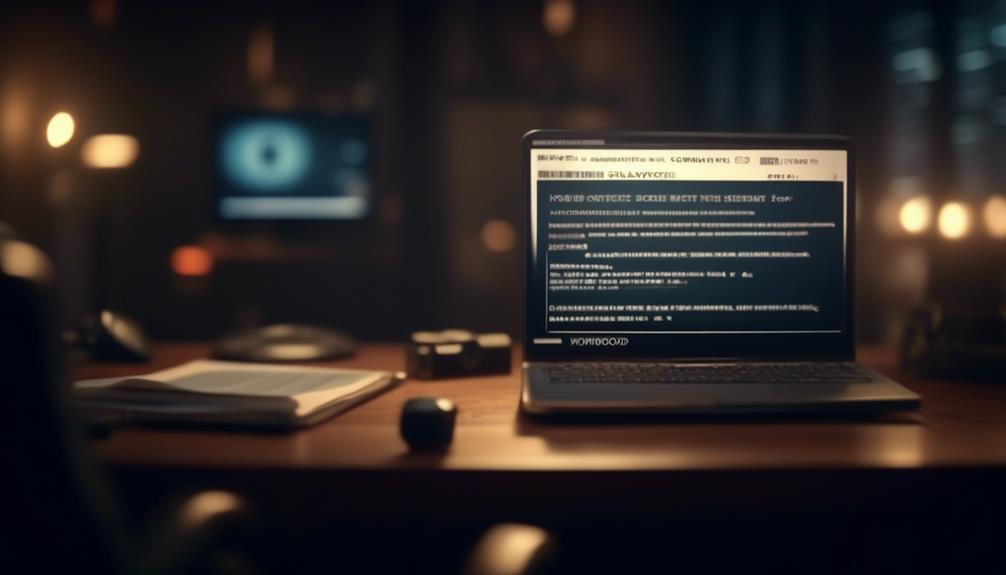
We can enhance our communication by implementing personalized techniques that cater to individual preferences and needs. Personalization adds a personal touch to our messages, making them more meaningful and effective. Here are four techniques for achieving this:
- Customized Order Options: Utilize customized order options for personalized letters, ensuring that each message is tailored to the recipient's specific needs and interests.
- Variety of Templates: Use a variety of love letter templates for personalization, allowing for a range of emotions and expressions to be conveyed based on the recipient and the context of the message.
- Employee Communication: Maintain effective communication with returning employees by covering various personal matters related to them, such as acknowledging their achievements or addressing any concerns they may have.
- Professional Time Off Requests: When requesting time off, use templates to ensure a professional and formal way to request time off, while also promoting a healthy work-life balance for employees.
Review and Sending Process
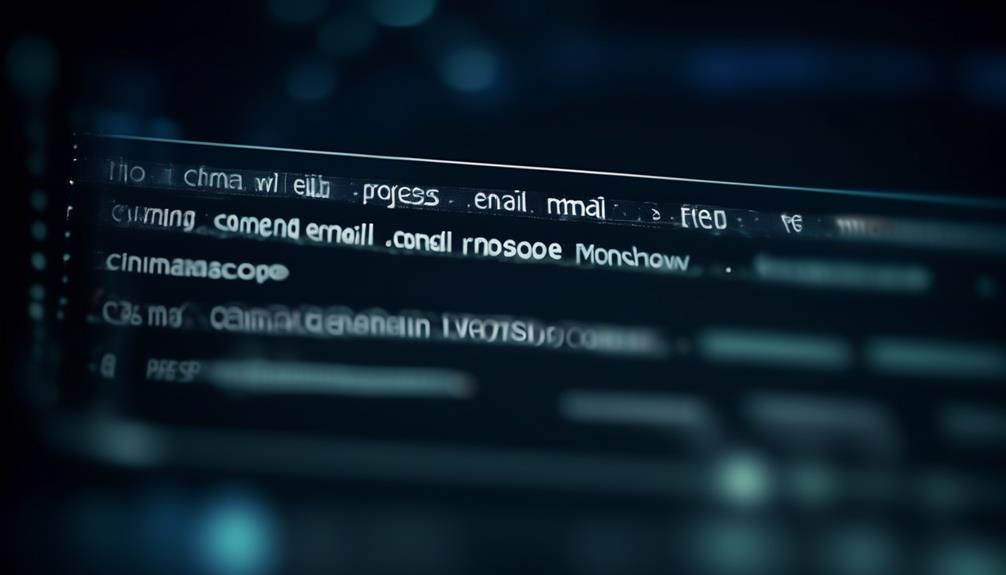
Making the shift to the review and sending process, we can ensure that our personalized communication maintains its effectiveness and professionalism. This process is crucial as it involves checking the content and details of the email before hitting the 'Send' button.
By carefully reviewing the subject line, body content, attachments, and recipient list, we guarantee that the email is accurate, error-free, and aligns with company standards. This meticulous review not only enhances the quality of our communication but also fosters a sense of reliability and attention to detail. It's imperative to double-check the email to maintain consistency and professionalism in all our correspondence.
Once the review process is completed, we proceed with sending the email to the intended recipients. While this may seem like a routine step, it's essential to ensure that the email is sent from the correct email account and that all recipients are accurate. This final stage of the process marks the culmination of our efforts to deliver precise and polished communication.
Frequently Asked Questions
How Do You Announce an Email Address Change?
We announce an email address change by sending a clear and concise notification to our contacts.
It's essential to provide necessary information and express gratitude for their understanding.
We must also ensure that important contacts are notified and update the email address on all platforms.
Additionally, we should inform personal and professional contacts, update our email address on social media profiles, and check automated email subscriptions or services.
How Do I Write a Letter to Change My Email Address?
We write a letter to change our email address for the following reasons:
- Clearly stating the reason for the change
- Providing the new email address
- Expressing gratitude for understanding
- Encouraging recipients to update their contact information
It's important to maintain a positive tone throughout the letter and include a polite closing. We always ensure that the recipients have all the necessary information to continue correspondence seamlessly.
Dear [Recipient's Name],
I hope this email finds you well. I am writing to inform you that I will be changing my email address. The reason for this change is [state reason].
Please update your contact information with my new email address: [new email address]. This change will be effective from [date].
I would like to express my gratitude for your understanding and cooperation during this transition. I understand that updating contact information can be an inconvenience, and I appreciate your willingness to make this change.
To ensure that we can continue our correspondence seamlessly, I kindly request that you update your records with my new email address as soon as possible. This will help avoid any disruptions in communication.
Thank you once again for your understanding and cooperation. If you have any questions or need further information, please do not hesitate to contact me at my new email address.
Best regards,
[Your Name]
How Do I Notify Contacts of Change of Email Address?
We notify contacts of a change of email address by sending a clear and concise email. We provide the new email address and any relevant details, and we thank recipients for their understanding.
It's important to update our email address on social media profiles and check for any automated email subscriptions or services. This ensures everyone has our updated contact information.
How Do You Inform Customers of Address Change?
We inform customers of an address change by crafting a clear and concise email notification.
It's crucial to communicate the change effectively to avoid any confusion or missed communications.
Our aim is to ensure that our customers seamlessly transition to the new email address without any disruptions.
We take this responsibility seriously, and our proactive approach is key to maintaining strong relationships with our valued customers.
Conclusion
As we embrace change and adapt to new email addresses, we also embrace the opportunity to stay connected and informed.
Just as our email addresses evolve, so do we. Embracing change allows us to grow, learn, and connect in new and exciting ways.
Let's continue to stay open to change and the possibilities it brings.
Natali – Editor in Chief (Strategy and Mastery, AI Expert) Natali, our Editor in Chief, is the driving force behind our content’s strategic direction. With a keen eye for detail and a deep understanding of market trends, Natali ensures that our content is top-notch and strategically aligned with our client’s goals. Her expertise in AI helps to seamlessly integrate advanced technology into our marketing strategies, pushing the boundaries of conventional marketing.
Email Template
Mastering Magento Email Templates: Tips & Tricks
Harness the power of Magento 2 Email Template to revolutionize your email marketing strategy and elevate customer engagement to new heights.

A well-designed email template can have a major impact on how customers interact with and perceive a brand.
But what if I told you there’s a way to take your email communication to the next level? Magento 2 Email Template offers a range of customizable options that allow us to tailor our emails to reflect our brand’s identity and deliver a more personalized experience to our customers.
From theme-based customizations to dynamic data integration, the possibilities are endless.
But how exactly can we leverage these features to enhance our email marketing strategy and drive better results?
Let’s explore the world of Magento 2 Email Template and uncover its potential for elevating our customer communications.
Key Takeaways
- Theme-based customizations allow developers to override email templates and tailor the design to align with the website’s branding and styling.
- Admin-based customizations provide a straightforward way to customize default transactional emails by choosing a base template and customizing the content, subject, and styles.
- Customizing email templates and configuring store email addresses within the templates ensure a consistent and professional appearance and ensure that customers receive communications from recognizable sources.
- Utilizing dynamic data and variables in email templates enhances customization and personalization, allowing for a tailored and engaging experience for customers.
Theme-based Customizations
In theme-based customizations, developers can override email templates by creating templates in a new directory within their custom theme. This pattern follows the structure of theme_dir/ModuleVendorName_ModuleName/email.
By customizing email templates within the custom theme, developers have the flexibility to tailor the email design to align with the overall branding and styling of the website. This customization process involves using HTML and CSS to modify the appearance of the email templates. Additionally, custom variables can be utilized to introduce dynamic content into the email templates, providing personalized information to the recipients.
Creating custom email templates within the custom theme allows for a seamless integration of the email design with the website’s theme, ensuring a cohesive and consistent brand experience for customers. Furthermore, the customization of email templates in the custom theme empowers developers to maintain control over the visual presentation and layout of the emails, leveraging the full potential of CSS for styling and layout adjustments.
With the ability to customize email templates within the custom theme, developers can create compelling and visually captivating emails that effectively communicate with the recipients.
Admin-based Customizations

Admin-based customizations in Magento 2 provide a straightforward way to customize the default transactional emails. Here’s how to do it:
- Accessing Admin-based Customizations:
- Go to MARKETING > Communications > Email Templates in the Admin panel to access admin-based customizations.
- Customizing Email Templates:
- Choose a default template as a base and customize the content, subject, and styles to suit your requirements.
- Configuring Customized Templates:
- After customizing the template, configure it to be used in the Sales Emails section of the Configuration to ensure that the new, customized email templates are used for transactional emails.
Email Content Customization
To refine the customization of email content in Magento 2, we build upon the foundation established through admin-based customizations, ensuring a seamless transition to tailoring the email templates to meet specific needs and branding requirements.
When creating a new email template or editing an existing one in Magento 2, it’s essential to consider the template content and HTML tags used. Custom templates and configuration play a significant role in achieving the desired look and feel for email communications.
Email template contains various elements, including dynamic data and system variables, which can be leveraged to personalize the content for individual recipients.
Additionally, inline CSS is crucial for ensuring consistent rendering across different email clients. By applying inline styles using tools such as the Emogrifier library, the presentation of the email template can be optimized for a professional appearance.
It’s also important to configure store email addresses within the templates to ensure that customers receive communications from recognizable and appropriate sources.
Monitoring and analyzing the performance of customized email templates can provide valuable insights for further tailoring messages to different customer groups, ultimately enhancing the effectiveness of email communications.
Email Styles and Organization
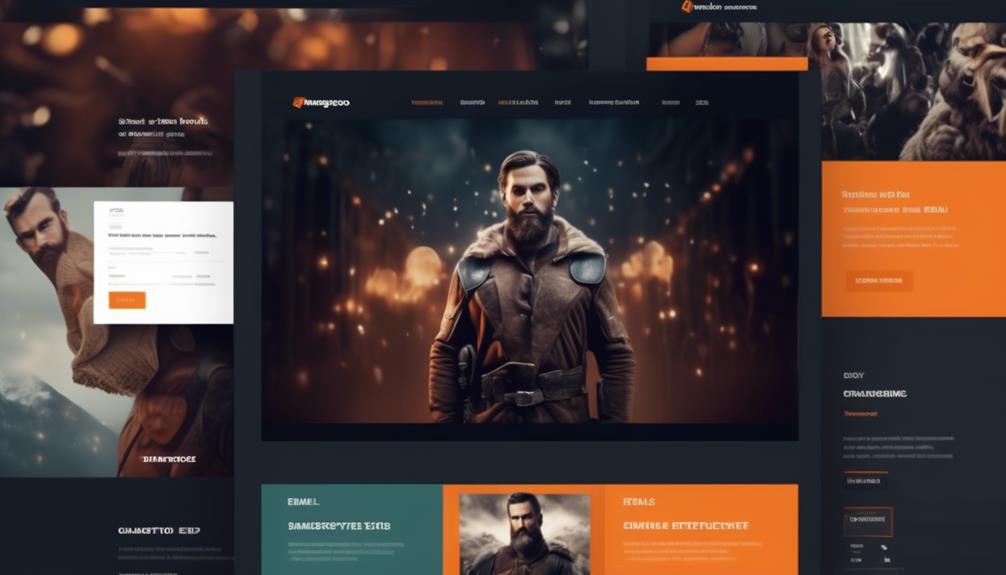
How can we effectively structure and organize the email styles to ensure visual appeal and adaptability across various platforms in Magento 2?
When creating email templates in Magento 2, it’s crucial to pay attention to the organization and styling to ensure a visually appealing and consistent experience for recipients. Here’s how we can achieve this:
- Utilize standard system fonts: Incorporating standard system fonts in the email template layout ensures a consistent and professional appearance across different devices and email clients.
- Implement responsive design principles: By adopting responsive design principles, we can ensure that the email templates adapt seamlessly to various screen sizes, enhancing the user experience for recipients accessing emails on different devices.
- Optimize image sizes: Optimizing image sizes within the email templates is essential for faster loading and improved visual appeal, especially on mobile devices with slower internet connections.
Dynamic Data and Variables
Dynamic data and variables significantly enhance the customization and personalization of email content for improved customer engagement. In Magento 2 email templates, variables can be used to include store and sales related information, such as the Name and Sender Email.
These templates are treated as physical files and can be customized to meet specific requirements. To add a variable to the email template, one can simply click the ‘Insert Variable’ button and select from a list of default variables or create a new custom variable.
The Sender Name and Sender Email can also be dynamically populated using variables, ensuring that each email is personalized and tailored to the recipient. By leveraging dynamic data and variables, the content of Magento 2 email templates can be personalized with store-specific details, order information, and other relevant data, providing a tailored and engaging experience for customers.
This level of customization is crucial for building strong customer relationships and driving sales through targeted and relevant communication.
Frequently Asked Questions
How to Setup Email Templates in Magento 2?
Setting up email templates involves creating theme-based customizations in a new directory within the custom theme or using admin-based customizations through the Admin panel.
We configure the template in the Sales Emails section of the Configuration and customize the header and footer templates using theme or admin methods.
Customizing email content with system and template-specific variables and applying inline styles for email clients ensures the templates are tailored to our needs.
How Do I Change My Magento 2 Email Template?
To change the Magento 2 email template, follow these steps:
- Navigate to the Admin panel.
- Access MARKETING > Communications > Email Templates.
- Select the template you wish to modify.
- Make the necessary changes to the template.
- Ensure that any customizations align with the overall design and branding strategy.
- Save the changes.
- Test the new template to ensure it renders correctly across different email clients.
How Do I Send a Custom Email in Magento 2?
We send custom emails in Magento 2 by following these steps:
- Creating a new email template in the admin panel or by customizing the theme-based template.
- Utilizing the built-in email functionality in Magento to send the custom email.
- Programmatically triggering the sending of the custom email using Magento’s email API.
By following this process, we are able to personalize and tailor our email communications to meet specific business needs.
Where Are Email Templates Stored in Magento 2?
Email templates in Magento 2 are stored in the module_dir/view/area/email directory.
It’s essential to know this to efficiently manage them.
Conclusion
In conclusion, Magento 2 Email Template offers powerful customization options for creating personalized and professional email communications. Businesses that personalize their email content see a 14% increase in click-through rates.
With theme-based and admin-based customizations, as well as dynamic data integration, businesses can create impactful email templates that enhance customer engagement and brand perception.
It’s an essential tool for optimizing email marketing strategies and improving overall customer experience.
Natali – Editor in Chief (Strategy and Mastery, AI Expert) Natali, our Editor in Chief, is the driving force behind our content’s strategic direction. With a keen eye for detail and a deep understanding of market trends, Natali ensures that our content is top-notch and strategically aligned with our client’s goals. Her expertise in AI helps to seamlessly integrate advanced technology into our marketing strategies, pushing the boundaries of conventional marketing.
-

 Email Marketing2 months ago
Email Marketing2 months agoThe Convergence of Email and Chat: Integrating Messaging Platforms in Your Strategy
-

 Email Marketing2 months ago
Email Marketing2 months agoHyper-Personalization: Using Big Data to Create 1:1 Email Experiences
-

 Email Marketing3 months ago
Email Marketing3 months agoThe Psychology of Color in Email Templates: Choosing the Right Palette
-

 Email Marketing2 months ago
Email Marketing2 months agoPredictive Analytics in Email Marketing: Anticipating Subscriber Behavior
-

 Email Marketing2 months ago
Email Marketing2 months agoEmail Marketing in the Metaverse: Preparing for Virtual and Augmented Reality
-

 Email Marketing2 months ago
Email Marketing2 months agoStorytelling in Email Marketing: Crafting Compelling Narratives
-

 Email Marketing3 months ago
Email Marketing3 months agoHow to Create ADA-Compliant Email Templates
-

 Email Marketing2 months ago
Email Marketing2 months agoNeuromarketing Principles Applied to Email Campaigns









